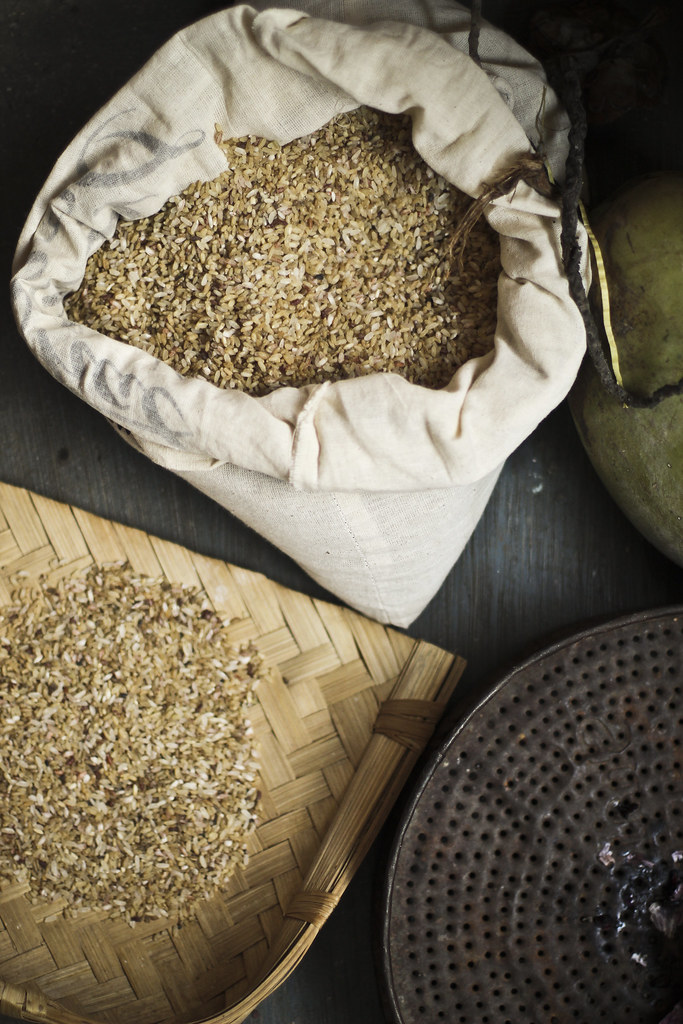One of the archetypal discoveries of mankind has to be sheathing food in leaves and steaming or roasting them. What a gift of high intellect would have been possessed by the person who discovered this typical style of cooking. These recipes using leaves have their unique bargaining chip. In the age old days, it could have been a thing of not having enough tools for cooking, but the cooks, in subsequent efforts, apparently learnt that these methods of cooking have huge health perks too. The jackfruit leaves are dense in antioxidants and this form of steaming idlis in leaves incorporates all the juices and flavours of the leaves into the idlis. And what better ways do we have to incorporate these leaves into our cooking? I even love how turmeric leaves, banana leaves, sal leaves, screw pine (kedige) leaves, betel leaves and even mantharai leaves find their ways into kitchens of almost so many states of India to make steamed dumplings, idlis and sweet kadubus.




Kotte Kadubu was a familiar affair when I was living in Mangalore in the 90’s and even when I used to frequent to Udupi. Gradually the clanking idli plates and fancy steamers made way into the kitchens and these eco friendly options slowly became forgotten fascinations. The moode made from the screw pine leaves is another beautiful recipe made for breakfast in the temple town and I think there are a very handful of folks who actually know the art of making the moode moulds perfectly. My dad would say, a perfect moode would actually unmould itself from the outer pine mould and the mould could be used again. I so wish to learn this art form once I get my hands on the screw pine plant.




Unlike the moode, the kotte kadubu mould isn’t a difficult one to compose. If you get the technique right it is just too easy. One tip I’d care to share, it is best that these moulds are prepped the previous night to save some time. The next morning you can just plonk the idli batter into the moulds and steam the idlis.
Memories have always been a part of my cooking style and recipes that I post here. I’d never want these traditional, regional and authentic recipes to perish in the name of the contemporary styles of cooking. The best part of these old recipes are the sustainability aspects. There is no much of utensil washing involved here after making idlis. The jackfruit leaf enclosure makes sure there is no direct heating of the idlis involved. In my household, I dump the used leaves into my compost pile and reserve the tooth picks for the next time. Ideally, coconut sticks have to be used for the fastening of the leaves.



Idlis are best when made with the parboiled Kusubalakki (Kusubala Akki), which gives a soft texture to idlis when cooked. Kusubalakki has to be soaked first in order to be used in idlis. I’ve used the unpolished, parboiled Kusubalakki locally sourced from a farmer for my recipe. The idlis turn out a little off white in colour but the texture is more pillowy, tender and flower like. Kusubalakki is served to women as post-partum food, that strengthens the bones and provides nourishment to new mothers and breast – feeding babies.
Kotte Kadubus are customarily prepared during festive occasions, specially during Janmashatami and Ganesh Chaturthi as an offering to the deities. Its distinct flavour marks the commemoration of these exceptional days of the year in the Hindu Calendar.
This is my patronised recipe for Kotte Kadubu. The styles of idli batter can change in every household, but I’d love to be a little assertive here, that this recipe works best if followed to the T.
Kusubalakki Ottu Shyavige
- Ottu Shyavige/String Hoppers/Idiyappams can be served with a wide range of accompaniments including the poppy – seed / gasgase payasam, vegetable stew and the coconut milk.
Ingredients
- 1 cup – Urad Dal / Black gram split lentil
- 2 cups – Poha (Flattened Rice)
- 3 cups – Kusubalakki (Idli Rice)
- 4-5 cups – Water (Depends on the ingredients used)
- 2 tbsp – Rock Salt
- 20 leaves for making 5 Kadubus – Jackfruit Leaves
- Around 20 – Coconut Sticks or Toothpicks
Directions
- Make the moulds as per the following steps. You can watch the video of how I made the moulds.
- Wash and soak the urad dal and poha/avalakki for about 5 hours. Wash and soak Kusubalakki in another container for about 5-6 hours.
- Grind the urad dal and poha to a fine paste by adding some water. Grinding in a stone grinder will give you better results.
- Tip the ground urad dal batter to a large vessel.
- In the same grinder, add the soaked rice and grind till it turns a little coarse with a little water.
- Now mix both the batters well, add salt and water to bring it into a cake batter consistency.
- Keep it aside for fermentation for 12 – 14 hours. Depending on the weather conditions, the batter will double or triple itself.
- Pour in the idli batter into the moulds. You can trim off the edges if the moulds if you feel its taking a lot of vertical space in the steamer.
- Steam the idlis in a idi steamer or pressure cooker with the whistle removed. This needs about 15 minutes to be done. Peel off the leaves, make sure you remove the tooth picks or sticks and serve hot with Koddel and chutney.







For the idli batter:









For making the kadubus:







Hi..I ate kadubu idli with a gojju(tangy and sweet) in a restaurant..do you hv any idea abt the gojju served with kadubu idli?
That is Menaskai. Hopefully I could post a recipe soon. Thank you :)